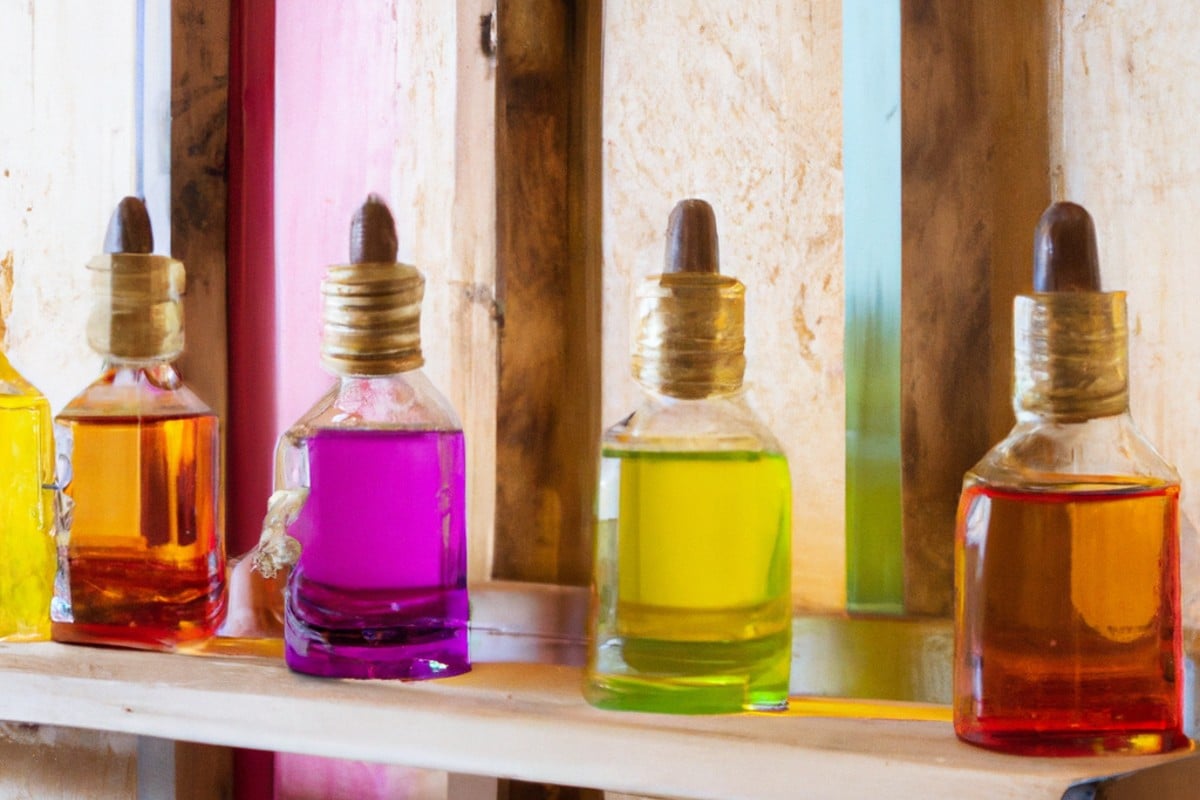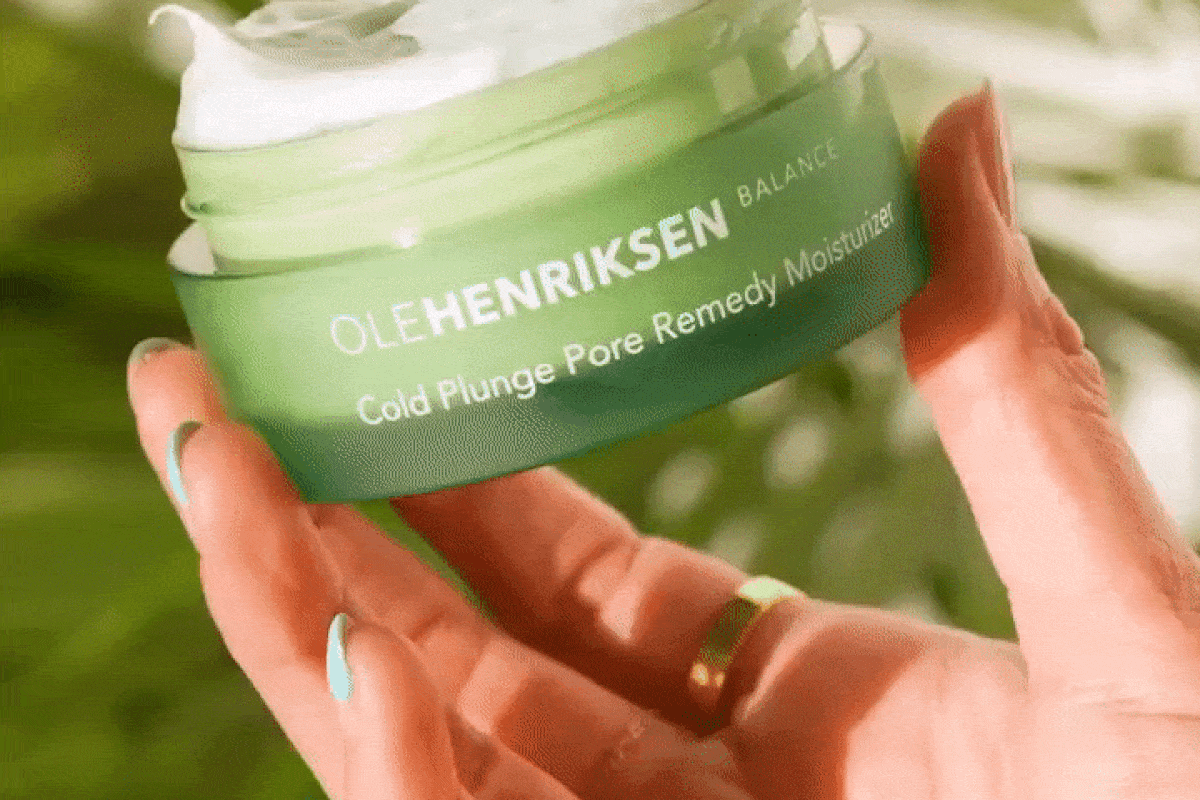Ask a Licensed Esthetician: Are Facial Oils Good for Oily Skin?
Your oily skin actually needs more oil. Here’s why.
If you deal with oily or acne-prone skin, the mere thought of applying more oil may make you want to click on this article immediately. But before you do, hear me out – facial oils can actually help regulate oil production and fight acne. The problem is finding the right oil that won’t clog pores or make acne worse, which unfortunately can be difficult because most people are notorious for it. To clarify this, I’m going to break down everything you need to know about using facial oils on oily skin without making your complexion more oily.
What are facial oils and how are they different from serums?
Let’s go back to the basics a bit.
Both oils and serums are products that nourish and improve the appearance of your skin, but they have some key differences, the biggest one being their base. Serums are water-based products, made from a blend of one or more ingredients, while facial oils are oil-based products, derived from plants and other natural compounds.
Serums usually contain a mixture of multiple active ingredients to target specific skin concerns such as fine lines and wrinkles, hyperpigmentation, and acne. They may contain powerful ingredients, such as vitamin C, hyaluronic acid or retinol. Serums are typically lighter and more readily absorbed than oils and are often used in combination with moisturizers to lock in their active ingredients and provide hydration.
Oils, on the other hand, are rich in antioxidants, vitamins and fatty acids that soothe, hydrate and protect the skin rather than treat it. They also help replenish the skin’s natural oils and improve its texture and elasticity. They can be used alone, mixed with other oils, mixed with a moisturizer, or used alone.
Can you use facial oils if your oily skin is prone to acne?
Absolutely! While it may seem counterintuitive to apply facial oils to oily skin, there is a good reason to do so.
Facial oils are more moisturizing and hydrating than serums or other types of products because they contain fatty acids, which are emollients. Most of them are very good at soothing and softening the skin, calming redness, and providing a burst of hydration that anyone’s skin would benefit from.
Even better than that, some oils can actually help regulate oil production by mimicking the natural sebum in the skin, such as squalane and jojoba oil. Others have antibacterial and anti-inflammatory properties that are very effective on acne-prone skin. In addition, unlike most synthetic products, facial oils are typically free of harsh chemicals, preservatives and artificial fragrances, making them ideal for natural skin care enthusiasts.
However, oils are also notorious for clogging pores and causing blackheads, which is why most people with oily skin avoid using them.
But the secret to using them without making your oily skin greasier or your acne worse is to rely only on products that are non-comedogenic (won’t clog your pores), lightweight and non-sticky. One benefit is to use facial oils with anti-inflammatory and anti-bacterial properties to help fight acne-causing bacteria. I’ll return to this topic later, where I’ll share some of the best facial oils for acne-prone, oily skin.
What about makeup remover oils?
Makeup remover oils are definitely something your oily skin will love. There is a theory based on the “like dissolves like” principle that adds importance to the idea of using oils to break down and dissolve the oils that are trapped in the skin, and these types of cleansers are the perfect weapon to achieve this goal.
Makeup remover oils break down and dissolve impurities such as makeup and sebum, which are difficult to remove with traditional water-based cleansers. When applied to the skin, the oils in the formula bind to the impurities that have accumulated on the surface. When the oil is massaged into the skin, it emulsifies and turns into a milky texture as it mixes with water. This allows the sebum and impurities to be easily rinsed away, leaving the skin feeling clean and balanced.
Oil cleansers are often used as the first step in a double cleansing routine, followed by a water-based cleanser to remove the oil and any residual impurities. They are ideal for oily skin (as long as the formula is suitable for oily skin) because they remove sebum more thoroughly than other products. This helps a lot in reducing fine sebum filaments, blackheads and greasy appearance.
What are the best facial oils for oily skin and acne?
Jojoba oil, squalane, rosehip and psoralenol are the best facial oils for oily skin that are light in texture and do not cause acne.
These are what I like to call dry oils-that is, oils with a lighter and drier feel that don’t make the skin look shiny and greasy. Non-comedogenic just means it won’t clog pores, so they won’t cause pimples, blackheads or whiteheads, and they won’t cause excess sebum.
The following are the best facial oils for oily and acne-prone skin:
Jojoba oil:
It is light, non-greasy and has anti-inflammatory properties that soothe acne-prone skin without aggravating it. It also reduces oil production because it resembles your body’s natural sebum.
Grape Seed Oil:
Grape seed oil is rich in linoleic acid, a fatty acid that moisturizes and protects the skin barrier. In addition, linoleic acid makes the sebum produced by the sebaceous glands more liquid and soft, making it easier to remove from the hair follicles.
Rose Hip Oil: It is rich in linoleic acid and vitamin A, both of which are ideal for oily complexions because they regulate sebum and reduce the chance of clogged pores. Rosehip oil is also rich in antioxidants, which promote a more even skin tone and reduce the appearance of acne scars. The texture is lightweight and absorbs quickly without leaving an oily or sticky residue.
Squalane oil:
It is a lightweight and non-comedogenic oil derived from squalene, a natural component of human sebum. Squalane has a smaller molecular size than other oils, which makes it easier to penetrate the skin without clogging pores or feeling heavy. It is often used in skin care products because of its ability to mimic the skin’s natural sebum and add moisture.
Geranium oil:
Regulates sebum production, which is why it is one of the best choices for oily, congested skin.
Sunflower oil:
Contains the highest amount of linoleic acid. It is also very light and absorbs well into the skin without leaving a residue.
Psoralenol Oil:
It is a plant-based alternative to retinol and is known for its anti-aging and anti-acne benefits. It increases cell renewal, which means it removes the bacteria and dead cells that accumulate in pores and that cause blackheads and pimples.
Hemp Seed Oil:
Contains high levels of omega fatty acids (thus reducing the greasiness of the skin) and provides hydration without clogging pores.
Tea Tree Oil:
People with oily skin prone to acne and redness love tea tree oil because of its antibacterial, decongesting and soothing properties. Its quick-drying absorption won’t leave your complexion oily. Instead, it reduces shine and purifies the skin by shrinking pores and absorbing excess sebum.
Oils to avoid for oily skin
It’s simple: avoid facial oils that cause acne and make your skin feel heavy and greasy. In general, the thicker the oil, the more people with oily skin or acne should avoid applying it to their face.
The term acne-causing is often mentioned in skin care products, and the definition of what exactly constitutes an acne-causing ingredient is often debated. However, if you have oily skin, there are certain oils that are widely considered to be the most important to avoid:
Coconut oil
Mineral oil
Soybean oil
Avocado oil
Cocoa butter
Evening primrose oil
Carrot seed oil
Chia seed oil
Marula oil
Olive oil
Keep in mind that everyone’s skin is different, and just because an oil is labeled as acne-causing doesn’t mean you have to completely avoid products containing it. The concentration is also important – the lower the amount of oil in the ingredient list, the less likely it is to clog pores. If you have oily skin, here’s a list of all the acne-causing ingredients you need to avoid.
How to use facial oils on oily skin
Choose the right oil: Look for an oil with a light texture that won’t cause acne, such as jojoba, grapeseed, rosehip or squalane.
Do a patch test: Before going all out, do a patch test and then apply the oil all over your face to see how your skin reacts.
Use caution: Start with a few drops of oil, then gradually add more as needed. Using too much can make already oily skin look and feel even greasier.
Start at night: If you are concerned about looking too oily during the day, try using a facial oil before bedtime. Our skin does most of its regeneration while we sleep, so a facial oil can nourish your complexion at night.
Use it after your serum/moisturizer: In general, you should layer your skincare products from thinnest to thickest consistency, which means your oil should be the last step in your routine, whether you use it alone or mix it with your moisturizer. If you use a facial oil in the morning, let it absorb for a few minutes before applying sunscreen.
Be patient: While oils are good for your skin, they won’t work overnight and it may take a while for your skin to adjust to using a facial oil. Be patient; give it a few weeks and see if it works.




